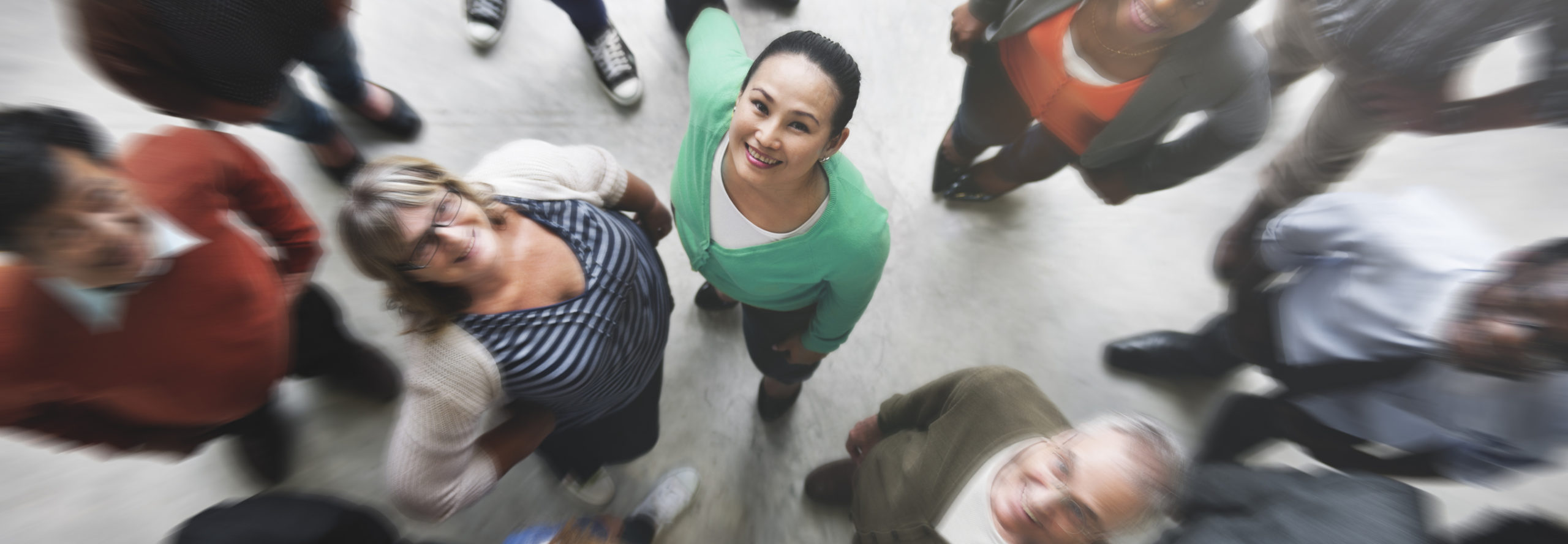Conflict Management & Resolution Services
We are collaborative practitioners offering conflict management & resolution services in Colorado and Wyoming
We have years of experience in finding common ground by assessing, designing, and facilitating collaborative problem solving processes.
Our goal is to fully understand each stakeholder’s needs, concerns, and aspirations to identify the common themes that surface and to make sustainable progress. We will work with you in each phase of the collaborative process.

Assessment
Discovering Common Ground
The search for common ground—and ways to move forward—calls for experienced mediation which uncovers commonalities in the midst of seemingly intractable conflict.
Every situation is different and must be treated with a unique approach.
Empathy is key. So is imagination, neutrality, and the flexibility to modify processes and to respond as needed to the group’s goals and needs.
During the assessments, we get to the heart of the matter by asking key questions, including:
- What is our goal?
- Are the issues timely and appropriate for collaborative problem solving?
- Who should be at the table?
- What resources, structures, and skill sets do we need to reach our goals? Where do we find them?
- What are the common perspectives and themes amongst all those involved?
We uncover patterns, themes, and perceptions using interviews, surveys, joint fact-finding, and small-group discussions. This feedback helps us map the issues, tensions, values, and forces shaping the situation and leading to engagement by all—so that we can move forward together.

Initial Process Design
“Fitting the Form to the Fuss” and Getting the Right People to the Table
Once an assessment is completed, the next step is designing an initial process that meets the needs of the situation and the parties and getting the right people to the table.
The design of a process for learning, deliberation, and decision-making is intended to identify tensions and diverse perspectives so that we can move toward a future of shared and sustainable progress.
We want to:
- Provide a way for all voices to be heard and for collaborative learning about the issues.
- Balance the size of the group (efficiency and inclusivity) with the ability of the group to achieve its goals (effectiveness).
- Identify and include a group of stakeholders who represent diverse interests, perspectives, and resources.
But it doesn’t stop there.
Because each situation is unique, the design of the process for each group must also be unique, requiring a customized review of and approach to shared perspectives and potential pathways to achieving common goals. Sometimes no design is necessary and the group simply makes up the process it needs as it moves forward.
Depending on each situation, design elements could include:
- roadmap of the proposed process and its desired outcomes
- meeting agendas, timeline and list of key participants
- presentations by stakeholders, scientists, experts, local leaders or natural resource practitioners
- field trips or discussions with subject matter experts
A good design process is transparent to—and iterative for—everyone involved. It is a good opportunity for participants to give input to practical approaches for collaborative learning and group decision-making.

Mediation
Helping Parties Find Mutually Acceptable Solutions
Once participants have accepted an initial design for the process, it’s time for either mediation or facilitation, processes that implement that design. You can read more about facilitation below.
In general, mediation is a process designed to help parties who are in conflict to:
- clarify a situation,
- understand their options within the context of a conflict, and
- explore whether a solution is feasible.
If a solution is feasible, mediation can help the parties reach a mutually acceptable solution.
Acting as a neutral third party, a mediator works to help disputing parties explore whether they want to find a solution and whether a compromise is feasible. Mediation tends to involve fewer parties and requires fewer meetings than a multi-party facilitation.
Mediations usually involve an intake interview with each of the participants to try to understand their perspective on what happened, followed by one to three meetings including all parties, and clarifying and writing down points of agreement.
Mediations can be more intense and emotional processes because the parties have been through a direct conflict together that they feel cannot be solved without assistance.
In mediations, we help parties to:
- outline positions
- define needs and interests
- generate options
- explore whether the options work for all parties
- develop a realistic action plan
The mediation process is designed to provide a safe space to help parties feel heard and empowered to work toward solutions to conflicts that felt intractable when they began the process. Mediation is usually faster and less expensive than litigation The parties also have more control over the outcome than they would by going to court or avoiding the conflict altogether. If a mediation process results in finding common ground or an agreement, the parties tend to feel better about the situation in the area where the conflict arose, whether at work or in their neighborhood, for example.
We take a progress-based, organic approach to mediation that is:
- flexible
- iterative
- dynamic
- transparent
- empathetic
It’s a balance between evolving as each party reaches a clearer understanding of their interests and options while staying within a structured but flexible process.
Our mediation process is less about applying fixed processes or formulas and more about tailoring the process—through feedback and iterative learning—to meet the parties’ needs and goals for problem-solving and implementation. We seek to be supportive of each party both inside and outside of the room where mediation conversations happen. This support allows the parties to realize and express their interests, needs, values, and goals for the conflict.
Common goals of a mediation can include:
- repairing a relationship
- working on a neighborhood issue
- resolving an employment issue
- receiving payment or a service in lieu of payment
- working together on a project or business
- a combination of these goals
If the parties want to manage their differences, they can work together to develop a practical and creative solution.
If the participants decide that mediation is part of their initial design for the process, our role as mediator is to help the parties:
- analyze the dispute
- communicate effectively
- weigh options by serving as an agent of reality for the parties
- develop a mutually acceptable solution
- clarify any confusing aspects of the process or remaining points of contention
- bring the parties together again if desired
The mediation process is meant to keep everyone engaged and moving toward the parties’ mutually defined goals. This is why we use tools and processes that are designed to encourage open, constructive dialogue so that parties can work towards mutually acceptable solutions.

Facilitation
Engaging All Parties
Once participants have accepted an initial design for the process, it’s time for facilitation, which implements that design.
Facilitation usually includes a combination of in-person meetings, conference calls, discussions about research, and field trips. And depending on the situation and those involved, the facilitation phase can be one meeting or 10 meetings, or something in between. It can also be a combination of small group meetings in preparation for those that involve the entire group.
There is an old saying in mediation: “Shifts happen.”
During the facilitation phase we are attuned to stakeholders learning from each other—due to field observation, experimentation, conversations among participants or presentations—and then shifting their attitudes, approaches, or understanding of the issues or the goals.
We take a progress-based, organic approach to facilitation that is:
- flexible
- iterative
- dynamic
- transparent
It’s a balance between evolving as a group and staying within a structured process.
Our facilitation process is less about applying fixed processes or formulas and more about tailoring the process—through feedback and iterative learning—to meet the group’s needs and goals for discovery, problem solving, and implementation.
We help group members:
- listen to each other
- search for common interests and aspirations
- uncover shared values and goals
The process of facilitation is meant to keep everyone engaged and moving toward the group’s collectively defined goals. This is why we use tools and processes that are designed to encourage open, constructive dialogue and collaborative learning so that stakeholders can work towards positive change.

Public Engagement
Creating a Forum for Those Affected
Public engagement helps identify people whose livelihoods and communities will be affected by a proposed action—and then provides them the opportunity to become engaged.
As a member of the International Association for Public Participation, we understand that many of the issues involving land use planning, transportation, natural resources, and the environment impact many different groups.
Successful public engagement requires us to:
- Raise awareness among diverse representative groups about the issue at hand.
- Help the convenor or sponsor (usually a government or non profit organization) understand and collect the views of the participants.
- Encourage genuine and direct involvement.
The type of public participation depends on the goals of the convenor or sponsor.
They may want one meeting to simply share information or receive advice from the general public, or they may seek in-depth involvement with specific sectors of the community over several months.
For example, the subject of the public engagement may be about:
- a specific site (expanding a reservoir, widening a road, cutting a forest, or closing a landfill),
- or a new or modified policy directive or regulation (requiring development impact fees, restricting grazing areas, or adopting oil and gas regulations).
The specific tools for communicating and engaging the community depends upon each group’s communication needs.

Training
Equipping Your Team for the Future
Whether your team has a current issue to work through together or you simply want to be ready for the challenges and opportunities of the future, our training program sets you up for successful collaborative problem solving and conflict management.
We share with your team attitudes, skills, and techniques that, when used appropriately, have the ability to strengthen your team in communication, problem solving, and discovery of common ground.
We offer skills training in:
- process design
- issue framing
- listening and effective questioning (communication)
- group facilitation
- consensus building
- conflict assessment and analysis
- conflict management
- drafting practical and achievable action plans
- mediation
